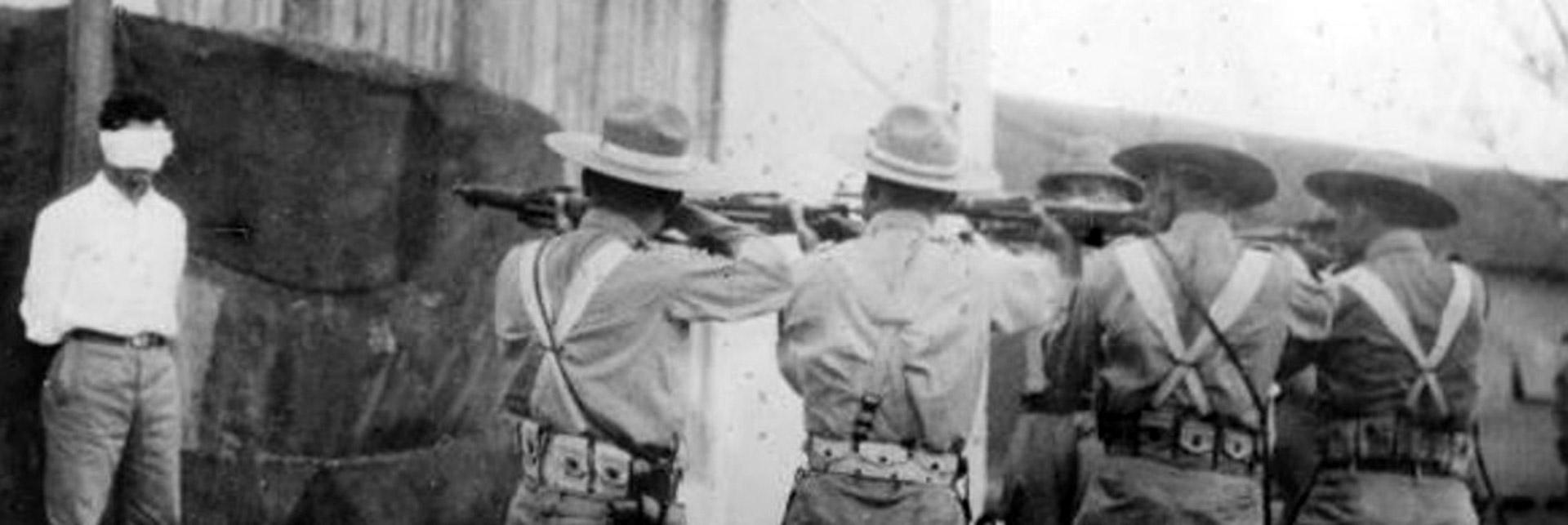
Deportations, Assassinations, and Dictator Nations: A Timeline of U.S. Intervention in Latin America
The documentary “Harvest of Empire,” based on the book by journalist Juan González, explores the history of U.S. intervention in Latin America and how it has led to the immigration issues facing the U.S. today.

history of U.S. intervention in Latin America and how it has led to the immigration issues facing the U.S. today.
By using foreign lands and labor to expand American business, financing the overthrow of democratically elected leaders, or training the leaders of oppressive military leaders, the U.S. has contributed to the poverty and civil unrest that has fostered conflict and violence abroad. The film also shows how the U.S. has alternated between eras of mass deportation and eras of mass recruitment of immigrant labor, and different ways Latinos have helped shape the nation.
1848 – Annexation of Mexican Northern Territories, congress takes least populated areas, so as not to be too contaminated by Mexican “culture” in major population centers.
1898 – Spanish American War: Spain relinquishes Puerto Rico, Guam, and the Philippines to the U.S. Puerto Rico remained under U.S. rule, used as resource for North American sugar companies.
1916 – U.S. Army trains Dominican National Guard leader Rafael Leónidas Trujillo, who brutally ruled the Dominican Republic for 30 years, making it easy for American companies to do business in the country.
1917 – U.S. imposes citizenship on Puerto Rico, changes the official language to English, and drafts Puerto Ricans to World War I.
1930s – During the Great Depression, President Herbert Hoover begins mass deportation program; of up to 1 million Mexicans deported, 60% are legal citizens.
1942 – Bracero Program is established in the United States. Mexican migrants to create a steady labor force needed during WWII.

1946– American factories aggressively recruit Puerto Ricans during the post-war era.
1954 – C.I.A. overthrows democratically elected Guatemalan President Jacobo Árbenz’s government, installing U.S.-backed military dictator Carlos Castillo Armas, leading to civil war from the 1960s-1980s; C.I.A.’s radicalization of Árbenz set the bar for U.S. to use local proxies to oust “communist” governments.
1952 – U.S. supports Fulgencio Batista’s dictatorship in Cuba due to the regime’s support of the penetration of the Cuban market by American companies.
1959 – Fidel Castro overthrows Fulgencio Batista during the Cuban Revolution.
1961 – Bay of Pigs: Castro army defeats U.S.-led assault by 1,400 Cuban exiles trained and equipped by the C.I.A.; 216,000 Cubans flee as refugees to U.S.
1963 – Juan Bosch becomes democratically-elected president of the Dominican Republic, following Rafael’s Trujillo’s assassination in 1961. He is overthrown after seven months in office, replaced with a military junta.
1965 – An armed uprising against the military junta leads to U.S. invasion of Dominican Republic. The enormous oppression of Bosch supporters leads to 1,000 Dominicans migrating to U.S.
1978 – Journalist and national Nicaraguan hero Pedro Joaquin Chamorro killed by the Somoza family, a U.S. backed-political dynasty in Nicaragua that ruled from 1936-1976. Chamorro strongly opposed the Somoza regime.
1979– Sandinista National Liberation Front ousts Somoza regime in Nicaragua.
1980 – 10,000 Cubans storm Peruvian embassy seeking exile, then become part of flotila that brings 125,000 Cubans to Miami in 5 months, causing social upheaval in Miami
1986 – International Court finds U.S. violated international law by funding the Contras and mining Nicaragua’s harbors.
1986 – U.S. President Ronald Reagan signs Immigration Law and Control Act, which starts largest legalization of undocumented immigrants in history, with almost 3 million legalized.
1993/94 – North American Free Trade Agreement (NAFTA) signed by Canada, Mexico, and the U.S. Corn imports from the U.S. drive down farmers’ prices in Mexico, leading to millions migrating to the U.S. looking for work.
1997 – Congress extends legal residency to Nicaraguan refugees.
2006 – Millions join immigration protests across major cities in the U.S., seeking comprehensive reform of the country’s immigration laws.
2012 – President Obama initiates the Deferred Action for Childhood Arrivals (DACA) policy, which allows certain undocumented immigrants who entered the U.S. as minors to receive a renewable two-year period of deferred action from deportation and eligibility for a work permit.
2013– Deportations reach a record high under U.S. President Barack Obama, topping 400,000. More than 2 million deportations had occurred since Obama took office.
2017 – Riding a wave of anti-immigrant sentiment, U.S. President Donald Trump introduces new policies to aggressively enforce the country’s immigration laws and speed up deportations. On September 5, Trump orders an end to the DACA program.
2018 – The Trump Administration implements a “zero tolerance” immigration policy for border-crossing offenses. The policy includes separating minor children from their parents, regardless of whether the parents are seeking asylum, or trying to cross the border for the first time, a misdemeanor crime. On June 20, President Trump signed an executive order that ended the practice of separating families, but does not address the status of 2,300 children who have already been separated from their parents.
By 2050, the Latino population is projected to grow to 130 million.

War is a Racket
There isn’t a trick in the racketeering bag that the military gang is blind to.

Vatican Canonizes Salvadoran Archbishop Oscar Romero, Who Was Killed by a U.S.-Backed Death Squad
Vatican Canonizes Salvadoran Archbishop Oscar Romero, Who Was Killed by a U.S.-Backed Death Squad

